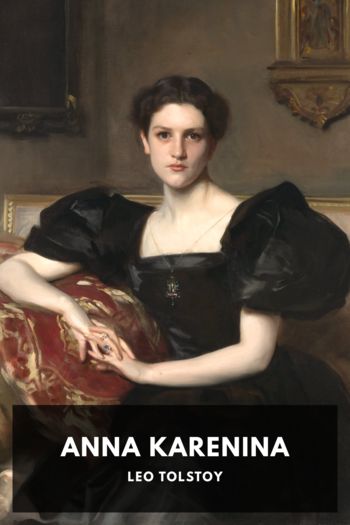What Is Art? Leo Tolstoy (good books to read for 12 year olds TXT) 📖

- Author: Leo Tolstoy
Book online «What Is Art? Leo Tolstoy (good books to read for 12 year olds TXT) 📖». Author Leo Tolstoy
Such being the position of affairs, it would seem only natural that the science of art should decline to content itself with a definition of art based on beauty (i.e. on that which pleases), and seek a general definition, which should apply to all artistic productions, and by reference to which we might decide whether a certain article belonged to the realm of art or not. But no such definition is supplied, as the reader may see from those summaries of the aesthetic theories which I have given, and as he may discover even more clearly from the original aesthetic works, if he will be at the pains to read them. All attempts to define absolute beauty in itself—whether as an imitation of nature, or as suitability to its object, or as a correspondence of parts, or as symmetry, or as harmony, or as unity in variety, etc.—either define nothing at all, or define only some traits of some artistic productions, and are far from including all that everybody has always held, and still holds, to be art.
There is no objective definition of beauty. The existing definitions, (both the metaphysical and the experimental), amount only to one and the same subjective definition which (strange as it seems to say so) is, that art is that which makes beauty manifest, and beauty is that which pleases (without exciting desire). Many aestheticians have felt the insufficiency and instability of such a definition, and, in order to give it a firm basis, have asked themselves why a thing pleases. And they have converted the discussion on beauty into a question concerning taste, as did Hutcheson, Voltaire, Diderot, and others. But all attempts to define what taste is must lead to nothing, as the reader may see both from the history of aesthetics and experimentally. There is and can be no explanation of why one thing pleases one man and displeases another, or vice versa. So that the whole existing science of aesthetics fails to do what we might expect from it, being a mental activity calling itself a science, namely, it does not define the qualities and laws of art, or of the beautiful (if that be the content of art), or the nature of taste (if taste decides the question of art and its merit), and then, on the basis of such definitions, acknowledge as art those productions which correspond to these laws, and reject those which do not come under them. But this science of aesthetics consists in first acknowledging a certain set of productions to be art (because they please us), and then framing such a theory of art that all those productions which please a certain circle of people should fit into it. There exists an art canon, according to which certain productions favoured by our circle are acknowledged as being art—Phidias, Sophocles, Homer, Titian, Raphael, Bach, Beethoven, Dante, Shakespeare, Goethe, and others—and the aesthetic laws must be such as to embrace all these productions. In aesthetic literature you will incessantly meet with opinions on the merit and importance of art, founded not on any certain laws by which this or that is held to be good or bad, but merely on the consideration whether this art tallies with the art canon we have drawn up.
The other day I was reading a far from ill-written book by Folgeldt. Discussing the demand for morality in works of art, the author plainly says that we must not demand morality in art. And in proof of this he advances the fact that if we admit such a demand, Shakespeare’s Romeo and Juliet and Goethe’s Wilhelm Meister would not fit into the definition of good art; but since both these books are included in our canon of art, he concludes that the demand is unjust. And therefore it is necessary to find a definition of art which shall fit the works; and instead of a demand for morality, Folgeldt postulates as the basis of art a demand for the important (Bedeutungsvolles).
All the existing aesthetic standards are built on this plan. Instead of giving a definition of true art, and then deciding what is and what is not good art by judging whether a work conforms or does not conform to the definition, a certain class of works, which for some reason please a certain circle of people, is accepted as being art, and a definition of art is then devised to cover all these productions. I recently came upon a remarkable instance of this method in a very good German work, The History of Art in the Nineteenth Century, by Muther. Describing the pre-Raphaelites, the Decadents and the Symbolists (who are already included in the canon of art), he not only does not venture to blame their tendency, but earnestly endeavours to widen his standard so that it may include them all, they appearing to him to represent a legitimate reaction from the excesses of realism. No matter what insanities appear in art, when once they find acceptance among the upper classes of our society a theory is quickly invented to explain and sanction them; just as if there had never been periods in history when certain special circles of people recognised and approved false, deformed, and insensate art which subsequently left no trace and has been utterly forgotten. And to what lengths the insanity and deformity of art may go, especially when, as in our days, it knows that it is considered infallible, may be seen by what is being done in the art of our circle today.
So that the theory of art, founded on beauty, expounded by aesthetics, and, in dim





Comments (0)